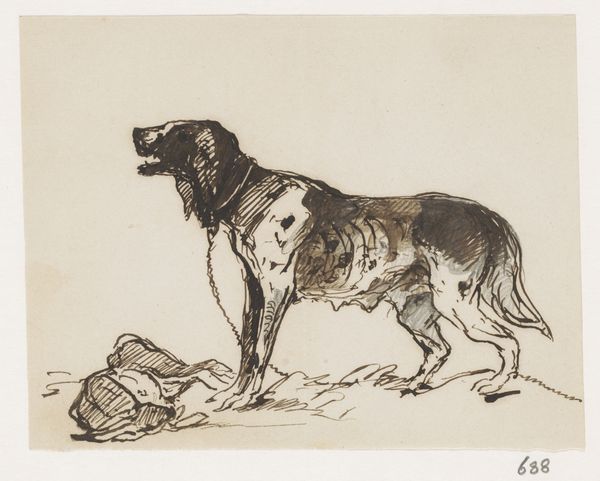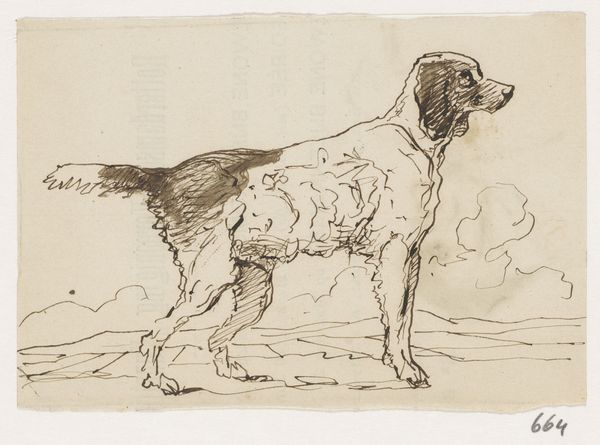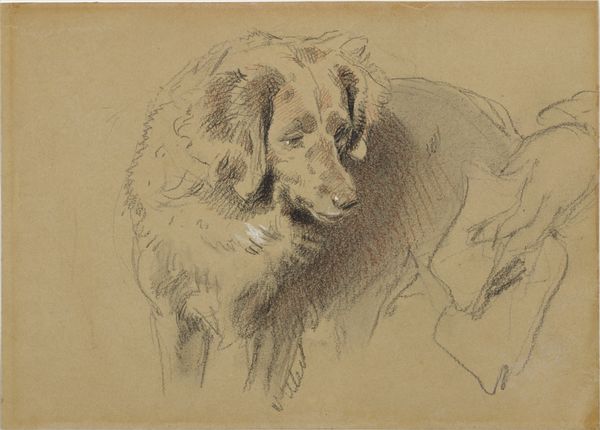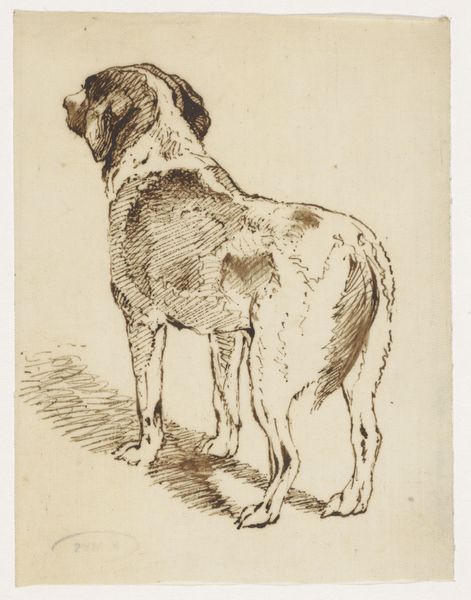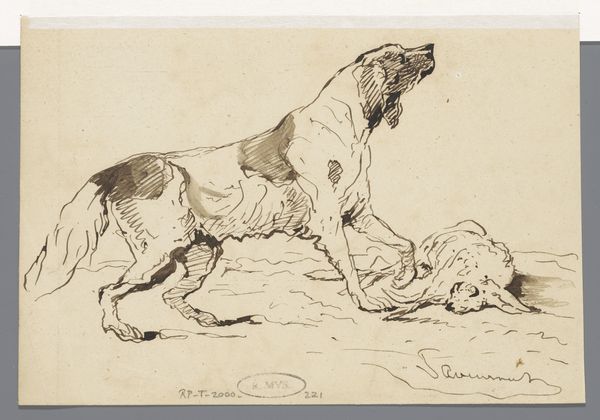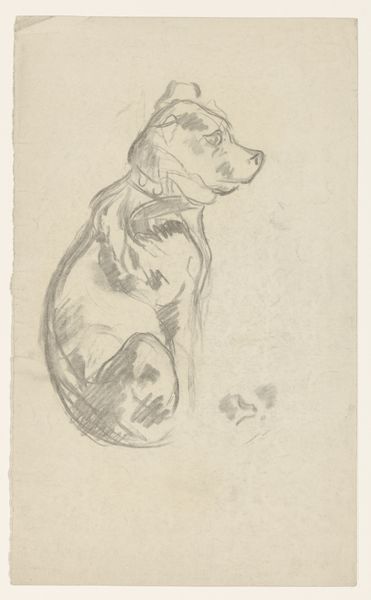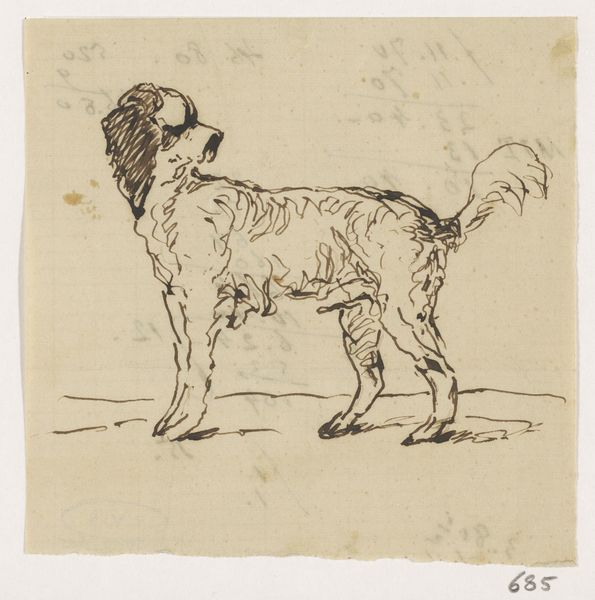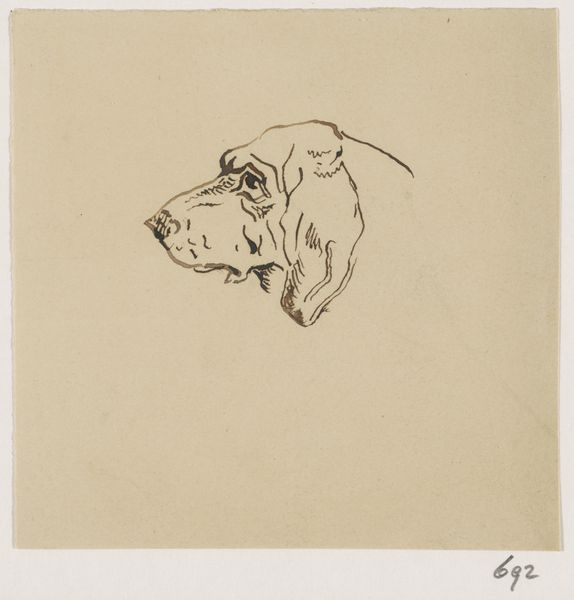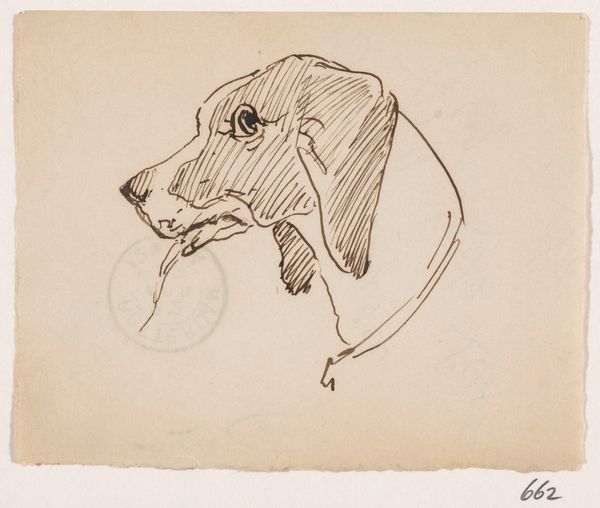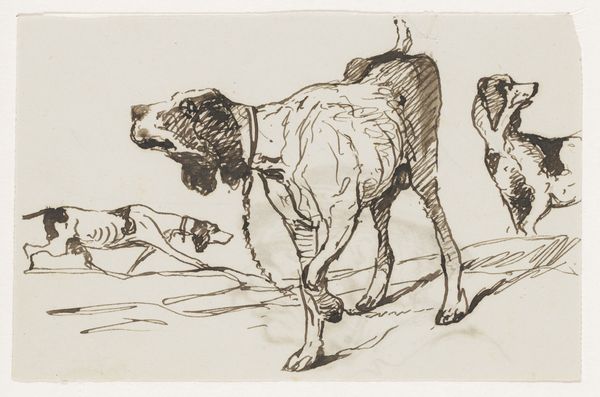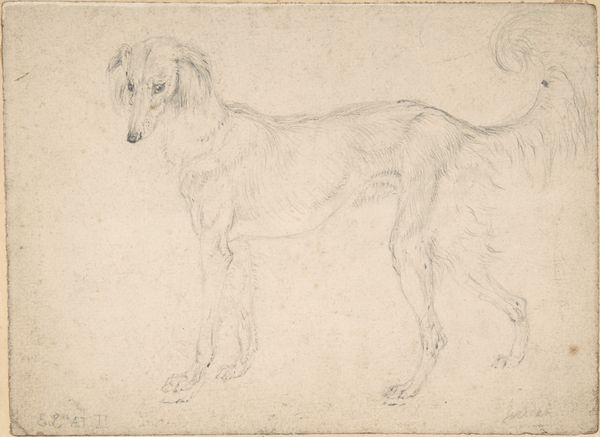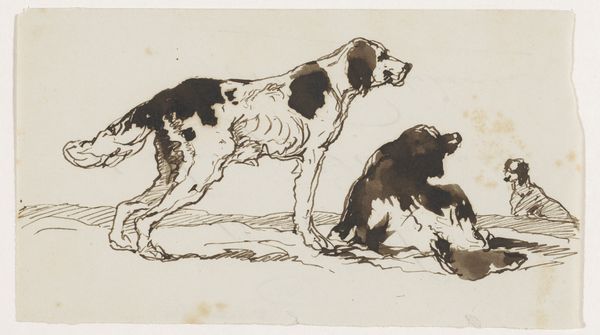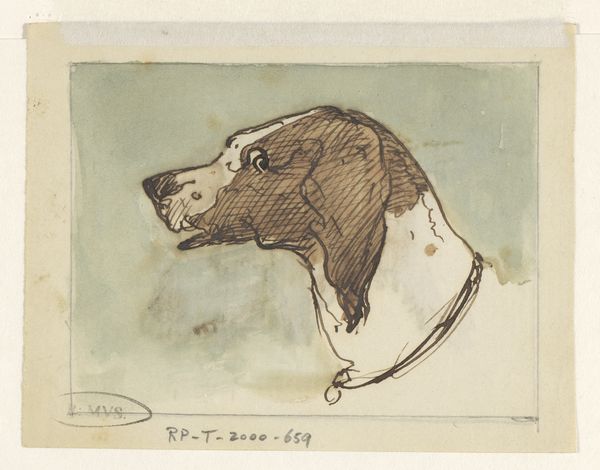
drawing, ink, pen
#
portrait
#
drawing
#
animal
#
pen sketch
#
dog
#
ink
#
ink drawing experimentation
#
pen-ink sketch
#
sketchbook drawing
#
pen
#
genre-painting
#
realism
Dimensions: height 75 mm, width 97 mm
Copyright: Rijks Museum: Open Domain
Editor: Here we have Johannes Tavenraat's "Jachthond," created sometime between 1840 and 1880. It's an ink drawing of a hunting dog. I’m struck by the apparent speed of the linework. What can you tell me about it? Curator: Notice how Tavenraat uses ink and pen to capture the dog's form, it’s more than just representation. Consider the socio-economic context. Genre painting was gaining popularity. Does this rapid sketching perhaps suggest a mass-production sensibility entering even fine art? Is this about artistic labor and its changing relationship to time and market demands? Editor: Mass-production even back then? It feels very immediate and personal, like a fleeting moment captured. The focus on the animal… Was there an audience for this kind of subject? Curator: Exactly! The rise of the bourgeoisie created a demand for relatable imagery. Think of the materials, too: ink, pen, paper. Relatively accessible. It challenges the hierarchy of "high" art forms, like oil painting and sculpture, making art, and perhaps representations of aristocratic hunting practices accessible through reproducible images. How does the "sketchiness" factor into this? Editor: It almost democratizes the image, like it could be anyone’s pet. So, the medium itself played a role in broadening the art world? Curator: Precisely. It shifts our focus to the labor, to the swift hand of the artist, using accessible materials to address a changing audience and maybe critique the portrayal of traditional activities. It reflects changing systems of production and consumption, doesn't it? Editor: I see what you mean. Thinking about the materials and who might consume the image offers a new layer to this seemingly simple sketch. It’s not just a dog; it's about shifts in art production itself! Curator: Absolutely. Examining the materiality and historical context allows us to unpack deeper social meanings within even the simplest of drawings.
Comments
No comments
Be the first to comment and join the conversation on the ultimate creative platform.
